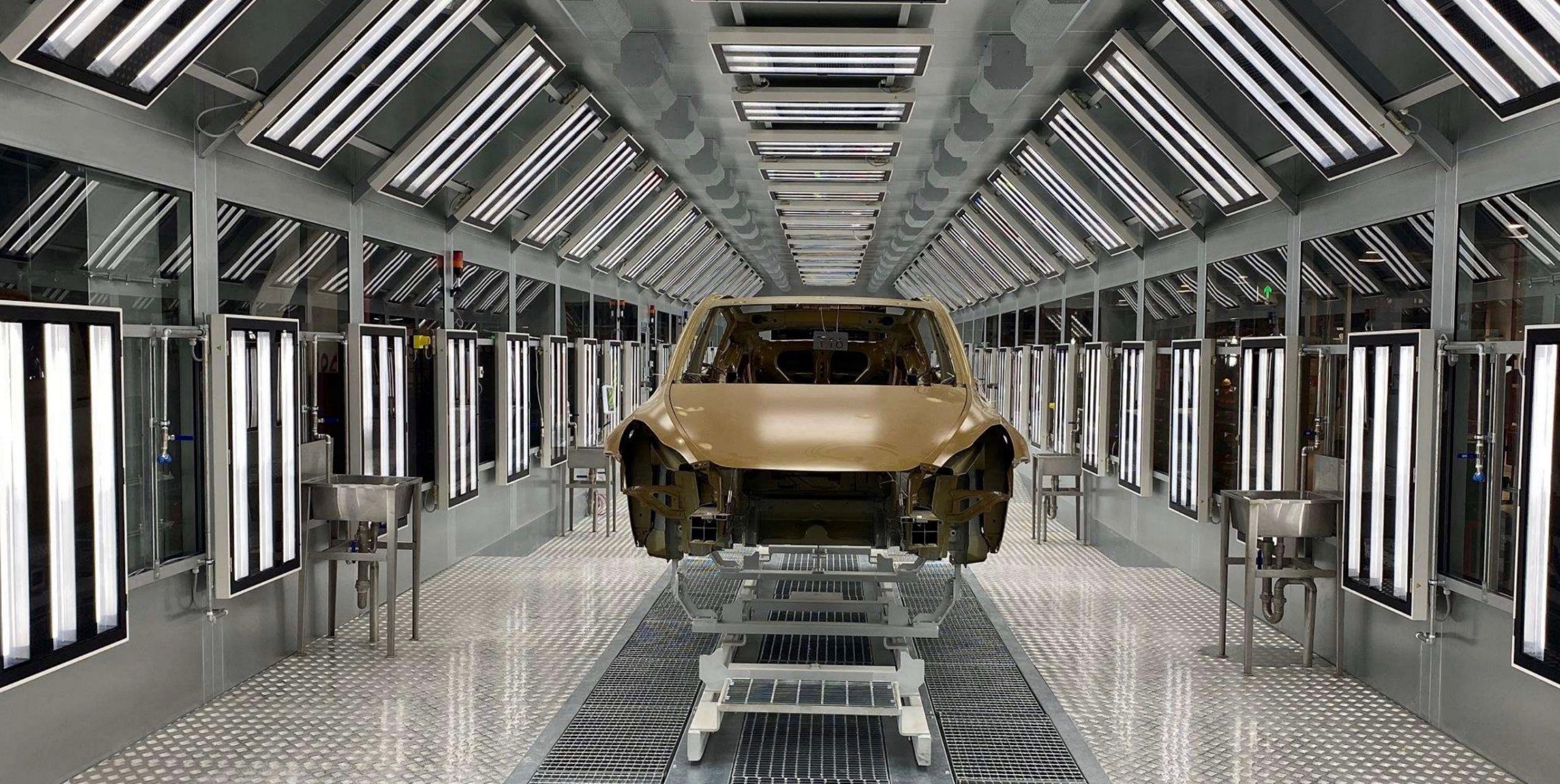Tesla’s (NASDAQ:TSLA) third-quarter earnings call comes on the heels of an impressive quarter that saw the electric car maker posting $8.771 billion in revenue and $809M GAAP operating income, beating Wall Street’s estimates once more. With these results, Tesla has now posted five consecutive profitable quarters.
As revealed in the company’s Q3 2020 Update Letter, Tesla currently sits on $5.9 billion in cash. This is despite the company’s simultaneous construction of Gigafactory Shanghai, Gigafactory Berlin, and Gigafactory Texas. Impressively enough, Model 3 and Model Y production have reached a run-rate of 500,000 vehicles per year at the Fremont factory. This, together with the facility’s capability to produce 90,000 Model S and Model X annually, as well as Gigafactory Shanghai’s current 250,000-per-year capacity, allows Tesla to take a definitive step towards a run-rate of 1 million cars per year.
For today’s earnings call, Tesla executives are expected to address questions surrounding the company’s plans for the coming quarters, particularly its battery cell production strategy. Updates on future projects such as the Cybertruck, Semi, and Roadster may also be mentioned, as well as more details on the third quarter’s surprising Tesla Energy results.
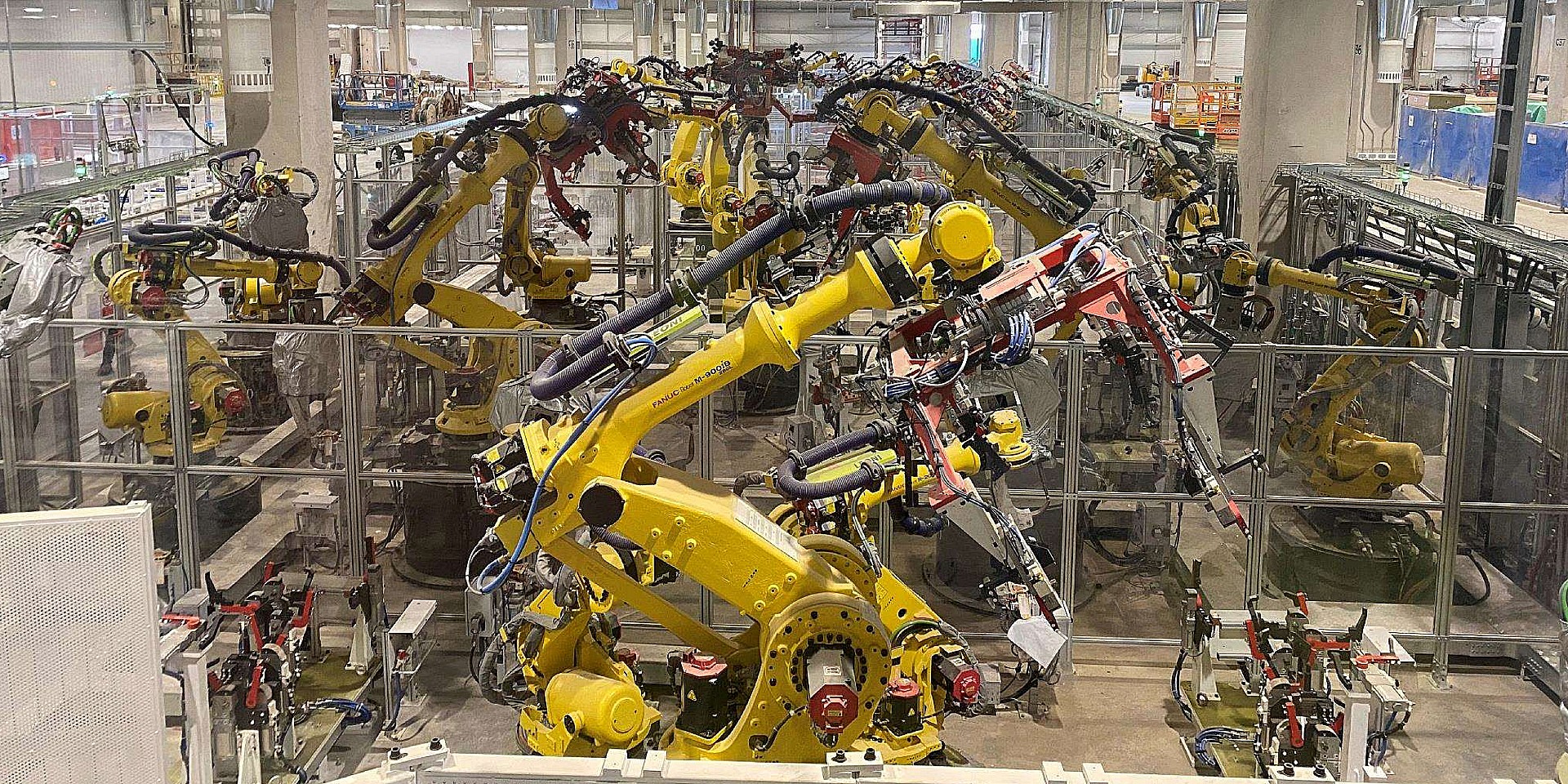
The following are live updates from Tesla’s Q3 2020 earnings call. I will be updating this article in real-time, so please keep refreshing the page to view the latest updates on this story. The first entry starts at the bottom of the page.
15:35 PT: And that’s it for the Q3 2020 earnings call! Thanks so much for staying with us for yet another live blog. We will see you in the next one.
15:34 PT: Final question from Philippe Houchois from Jefferies, who asks about Tesla’s business model for stationary storage. Johnson notes that Tesla is already seeing how energy prices are already seeing benefits from products like the Megapack and Powerwall. Using the hardware and software platform in the form of Autobidder, Tesla Energy has tons of potential.
The analyst also asks about Tesla’s skateboard design, which Musk confirmed will be obsolete in the long term. Musk notes that Tesla is looking to make its vehicles kind of like the way a toy car is made, with large casts and few parts. Using batteries as part of the vehicle’s structure is used in aircraft and rockets, so this approach would likely work for cars too. With such a strategy, Tesla is literally borrowing from orbital-class rocket design philosophy.
“You wouldn’t want to put a box in a box,” Musk noted. He did state that the transition away from the skateboard design won’t happen overnight, but it is bound to happen.
15:30 PT: Ben Kallo of Baird asks about OEMs and how they can get their act together. Elon notes that there will definitely be other car companies even after the EV age. He notes that Tesla designs and builds so much more of its cars than traditional OEMs. “It’s not very adventurous, and all the parts end up looking the same since they go to the same suppliers,” he said. “We’re probably an order of magnitude more vertically-integrated than other companies,” he adds.
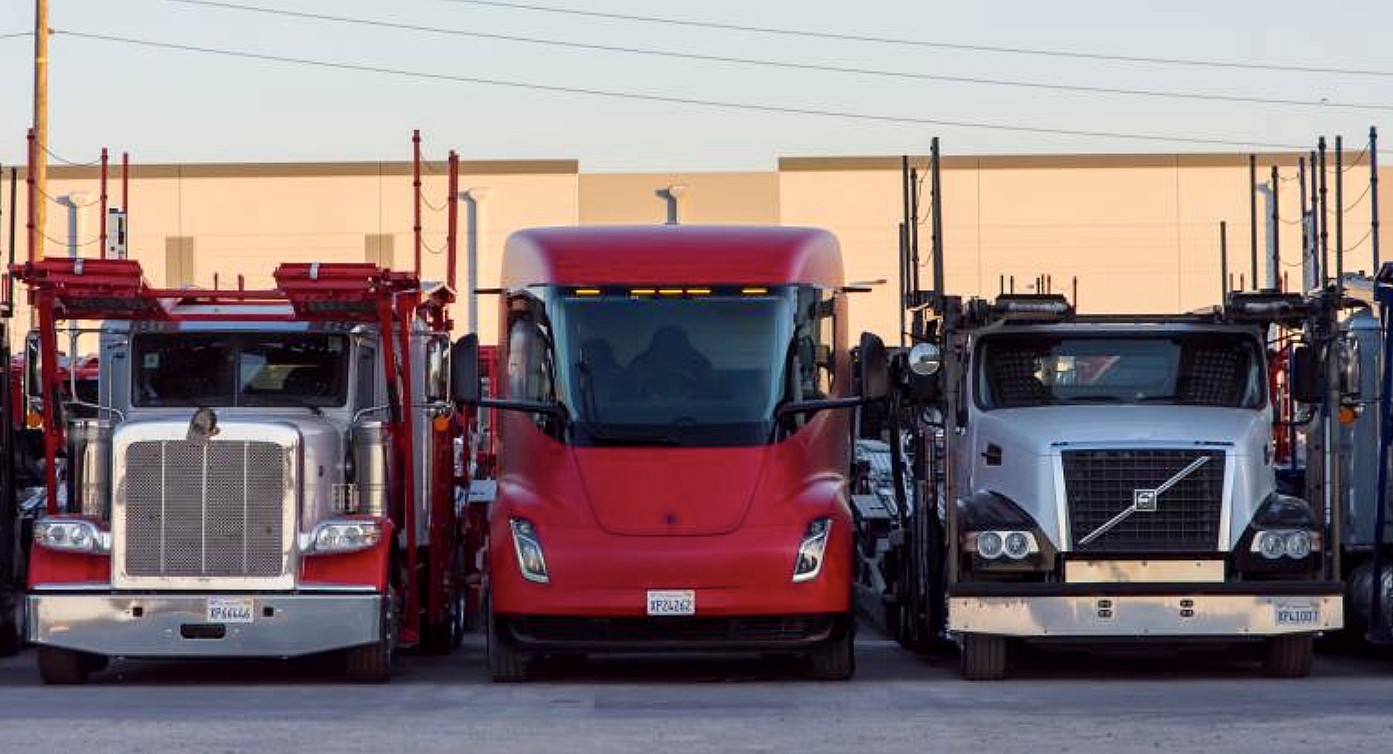
Tesla is working on several parties to ensure that the Semi will have a legitimate charging infrastructure on the vehicle. “We’re not working in isolation,” Guillen noted.
Musk adds that the Semi consumes about 5-6x the cells of conventional cars. “We need to solve cell constraints,” the CEO states. When asked if the Semi and autonomy could be a material business, Musk stated that there is no doubt. Guillen added that the tech that Tesla is putting on the Semi is identical to the tech the company is putting on its other vehicles.
As a follow-up, Levy asked about Tesla’s strategy with pricing, especially with regards to Berlin-made vehicles. Kirkhorn explains that this is affected by different factors, though Tesla is trying to move production higher to optimize pricing.
15:20 PT: Pierre Ferragu of New Street Research asks about the Cybertruck and its ramp. Musk notes that he and the Tesla team are working hard on making sure that the Cybertruck will be better than the prototype that was unveiled last year. “We want the car we deliver to be better than the car we unveiled.” Musk notes that there are a “lot of small improvements” that have been made to the vehicle, making it better than its already-impressive prototype. “I think it’s going to be better than what we showed. It will be made in Austin,” he added.
Musk reiterates that the Cybertruck’s hard exoskeleton will likely present some challenges with the vehicle’s manufacturing. “But nevertheless, “if all goes well, we can do some Cybertruck deliveries towards the end of next year.” Musk predicts lots of deliveries in 2022 and the year after.
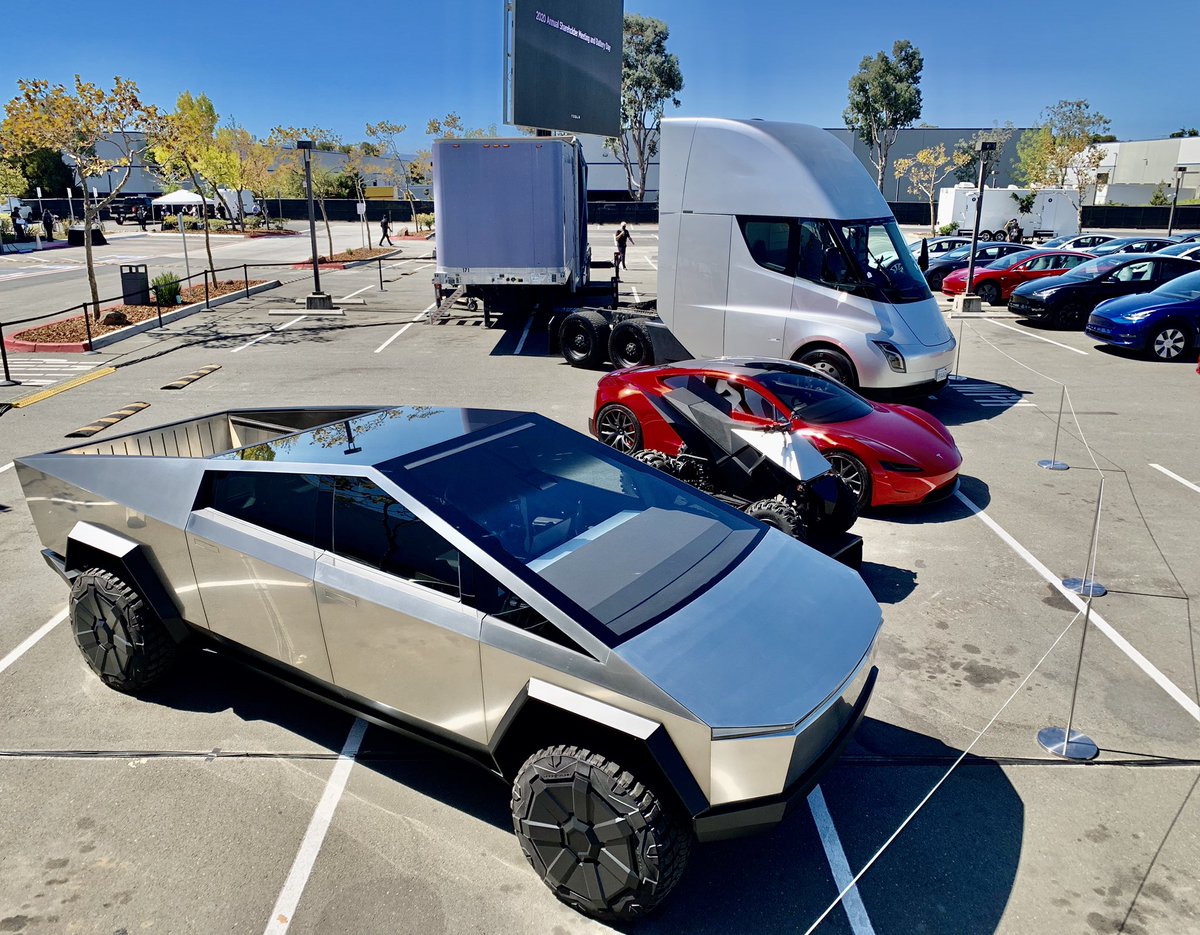
15:15 PT: Colin Rusch of Oppenheimer asks about Tesla’s processes and operations/equipment that are coming in-house. Musk notes that Tesla is “absurdly vertically integrated.” Tesla literally designs the machine, then the company makes the machine. “We made the machine that made the machine that made the machine. We’d like to outsource less,” Musk remarked. “This makes it quite difficult to copy Tesla,” he added. Musk admits that he’s not sure if insane vertical integration is a smart move, but so far, it appears that it is.
Musk is then asked about Tesla’s balance sheet, and how the company is looking to operate in the near future. “We’re trying to spend money at the fastest rate without wasting any of it,” Musk noted.
15:10 PT: Analyst questions begin. Wolfe Research is up first, asking about the targets that were announced during Battery Day. Elon noted that it’s difficult to predict Tesla’s actual output, but 20 million vehicles is a good number, representing 1% of the vehicles that are produced this year. Tesla has a mission to accelerate the advent of sustainability after all, and it needs volume to do that.
When asked about Tesla’s cell production, Musk noted that Tesla could and will change all aspects of the company’s battery cells. “We will change all aspects of the cell,” he said. Tesla will be exploring varying chemistries for its batteries over time. This is classic Tesla, in a way, as the electric car maker is still showing its tendency to continuously innovate.
15:05 PT: Elon highlights why making Tesla’s cars affordable is pivotal. “All of these margins will look comically small when you factor in Autonomy,” Musk said. Adding to the CEO’s statement, Kirkhorn stated that Tesla is moving full speed ahead with as much volume as possible. He adds that Tesla has grown volume and margins even with all the price reductions of Tesla’s vehicle lineup. In addition to reducing costs, the cars get better, and this becomes a reason for more consumers to purchase the company’s cars.
15:00 PT: A question from an institutional investor is brought up about Tesla’s HVAC plan, especially in light of the Model Y’s heat pump. Drew Baglino notes that the Model Y’s heat pump does provide Tesla with some background in this sense, and Elon Musk noted that the company has tech that should allow for home products to be developed.
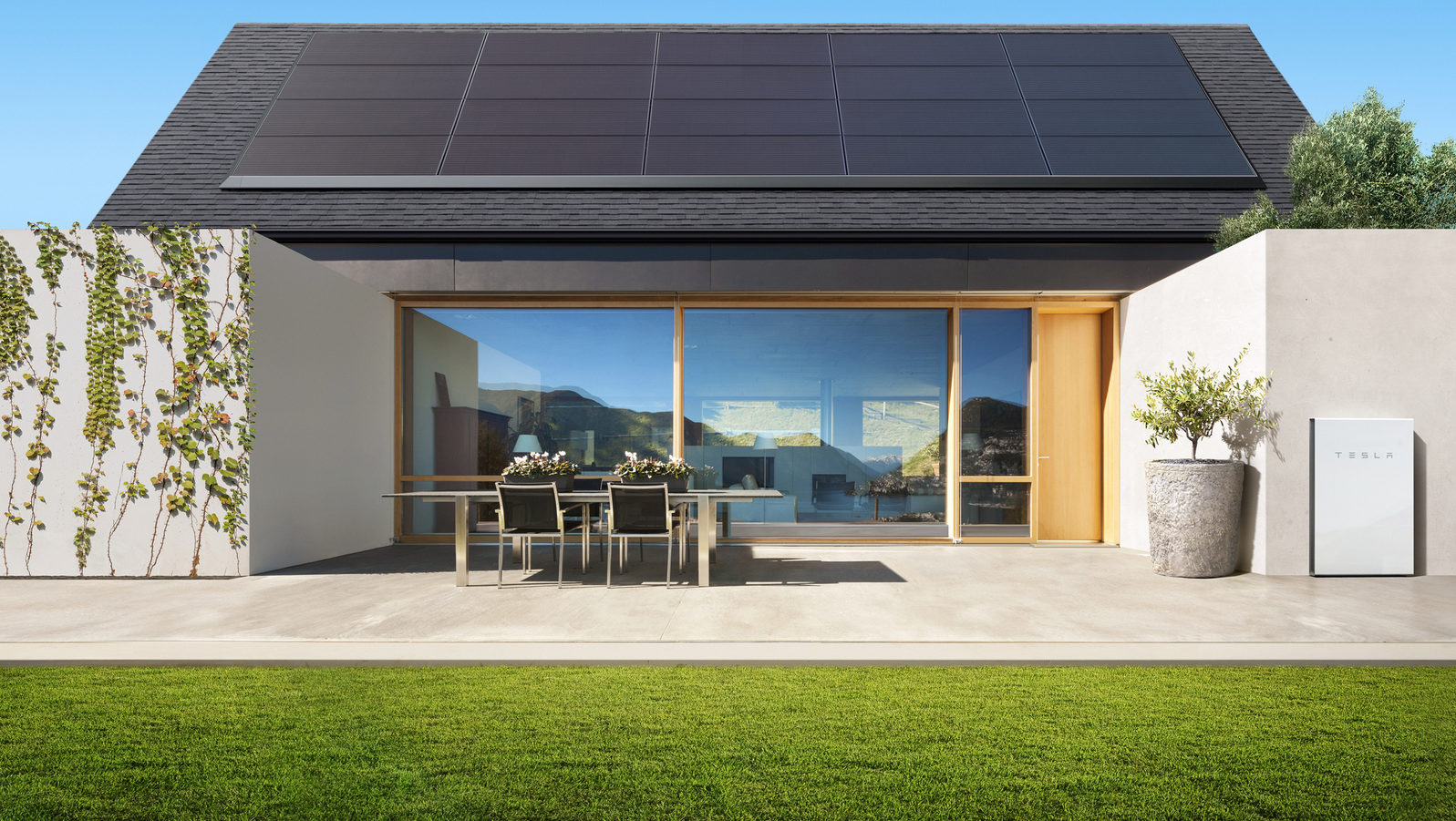
14:58 PT: Shareholder questions begin with a question about the company’s 4680 cells and if they will be produced at the same time as vehicle ramp in Berlin, which Drew Baglino confirms will indeed be the case. As for the idea of FSD being carried over from one vehicle to the next, Elon Musk noted that Tesla will “give it some thought.”
An inquiry about Solar Roof installation constraints was also asked. According to Johnson, the main constraint today lies in the installers themselves. It is pertinent for Tesla to ensure that the Solar Roof is easy to install, and so far, the response from third-party installers have been positive. Elon Musk notes that Solar Roof’s true potential would likely be very evident next year.
In response to a question about the idea of one of Tesla’s businesses spinning off into its own company, Musk discusses how Tesla is essentially a series of startups. “Every major product line is a startup. Every big new plant is a startup. And frankly, sometimes we have to learn a lesson a few times before it sinks in,” Musk remarked. He also noted that “Tesla is not dependent on enterprise software,” implying that Tesla develops all of its operational software internally.
No plans to spin anything out yet though. “It just adds complexity,” Musk said.
14:50 PT: RJ Johnson of Tesla Energy takes the stage. He discusses how Tesla Energy is ramping. “We have more demand than supply through 2021,” he said. Megapack is seeing more demand over the following year. He notes that as costs go lower, sustainable technologies are poised to replace fossil fuel-powered solutions. Other Tesla Energy products such as Autobidder and Powerwall continue to find more adoption as well.
Solar Roof is exciting as the company is gaining more experience in installing the product quickly. Solar Roof installation’s record now stands at 1.5 days.
14:45 PT: To conclude, Musk thanks Tesla’s employees and suppliers. He also extends thanks to investors who have stuck with the company through thick and thin. “I’ve never felt more optimistic about Tesla than I do today,” Musk said.
Zach Kirkhorn takes the stage. He mentions how Tesla now has five profitable quarter. The company’s regulatory credit sales continue to be strong. And despite expenses being higher due to Elon Musk’s payout from his compensation plan, the company was able to keep its numbers strong just the same. Manufacturing and operational costs continue to decrease, as per the CFO.
14:41 PT: The CEO also highlights that the Autopilot rewrite is a generalized approach to FSD, meaning that there are no specialized sensors needed for the vehicles to operate themselves.
In terms of capacity, Elon mentions the expansion of Gigafactory Shanghai, Gigafactory Berlin, and Gigafactory Texas. “We’re making progress on three major factories,” he said, adding that “always impressed by how much the Tesla China team makes.” Musk also notes that Giga Berlin, due to the ramp of new technology, the production of the facility will start slow, and then ramp to greater outputs over time. Giga Berlin could take about 12-24 months to reach full production capacity.
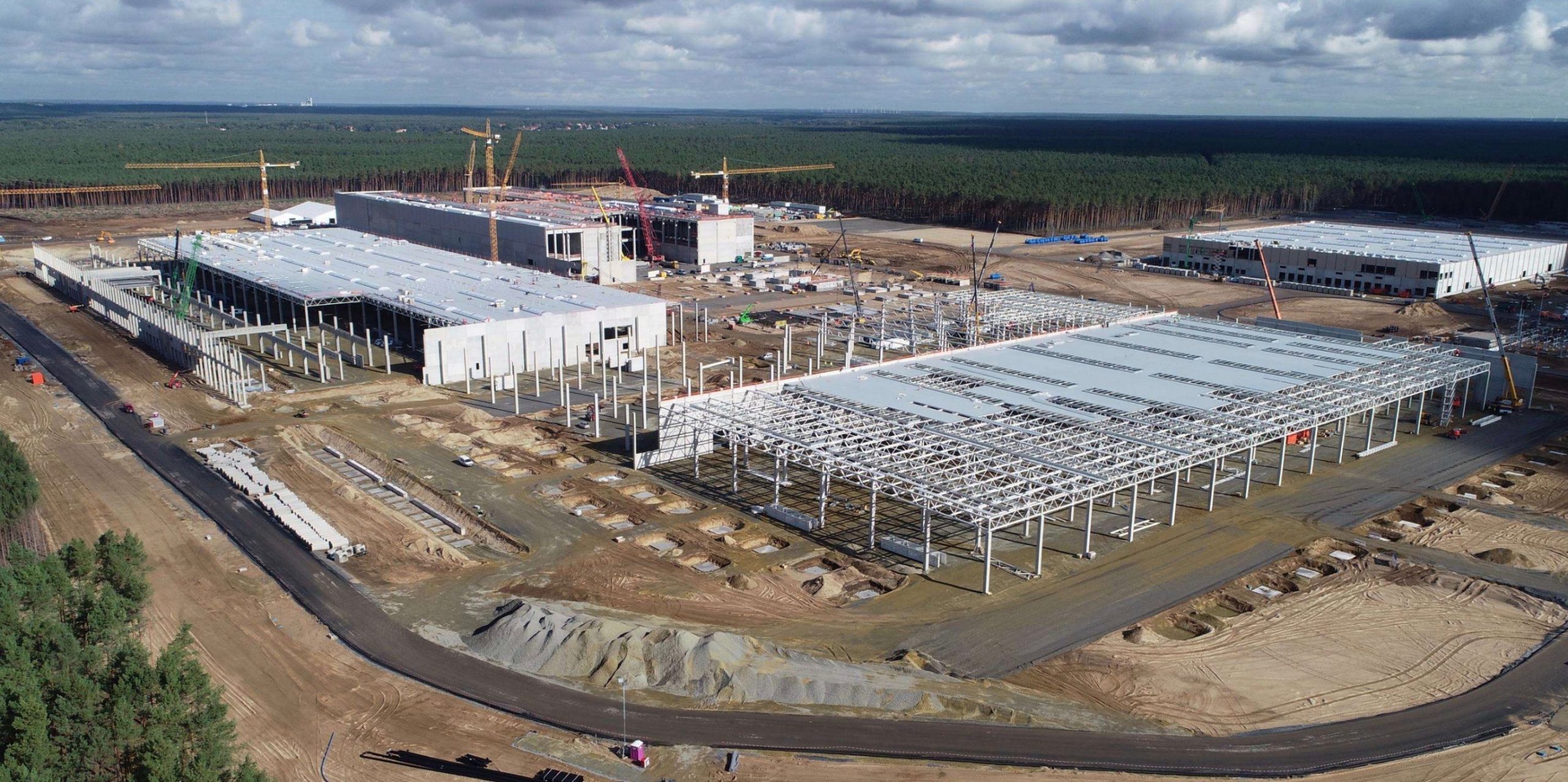
14:36 PT: Elon talks about how Q3 is a record quarter for Tesla. Full Stop. “Q3 was our best quarter in history,” he said. The CEO also discusses Battery Day, the culmination of years’ worth of work by the company. Musk notes that in a few years, batteries could cost half as much with cheaper production costs.
Musk also discusses updates to the rollout of Full Self-Driving. He specifically extends his thanks to the Autopilot team, which has been working like crazy to release the highly-anticipated rewrite. Musk states that the Autopilot rewrite could roll out to more drivers this weekend, with wide release by the end of the year.
14:34 PT: And we’re off! Tesla Investor Relations’ Martin Viecha takes the floor. Just like previous calls, CEO Elon Musk and CFO Zachary Kirkhorn are present, as well as other Tesla executives. Here’s Elon’s opening remarks.
14:32 PT: Then again, Tesla posted $809M GAAP operating income in Q3. That’s more than enough to justify a little delay, I guess.
14:30 PT: And… It’s starting! Here we go, folks… Wait, scratch that. It’s back to classical music.
14:25 PT: I gotta admit, this classical music is getting more and more relaxing by the quarter.
14:20 PT: It is time once more for Tesla’s quarterly earnings report! This makes five consecutive profitable quarters for Tesla now, which is something that definitely did not seem to be on the horizon in early 2019. Back then, it seemed like TSLA was the punching bag of every bear and critic out there. But since Q3 2019, things have changed, a whole lot. Needless to say, this earnings call will definitely be interesting.

Investor's Corner
Tesla price target boost from its biggest bear is 95% below its current level

Tesla stock (NASDAQ: TSLA) just got a price target boost from its biggest bear, Gordon Johnson of GLJ Research, who raised his expected trading level to one that is 95 percent lower than its current trading level.
Johnson pushed his Tesla price target from $19.05 to $25.28 on Wednesday, while maintaining the ‘Sell’ rating that has been present on the stock for a long time. GLJ has largely been recognized as the biggest skeptic of Elon Musk’s company, being particularly critical of the automotive side of things.
Tesla has routinely been called out by Johnson for negative delivery growth, what he calls “weakening demand,” and price cuts that have occurred in past years, all pointing to them as desperate measures to sell its cars.
Johnson has also said that Tesla is extremely overvalued and is too reliant on regulatory credits for profitability. Other analysts on the bullish side recognize Tesla as a company that is bigger than just its automotive side.
Many believe it is a leader in autonomous driving, like Dan Ives of Wedbush, who believes Tesla will have a widely successful 2026, especially if it can come through on its targets and schedules for Robotaxi and Cybercab.
Justifying the price target this week, Johnson said that the revised valuation is based on “reality rather than narrative.” Tesla has been noted by other analysts and financial experts as a stock that trades on narrative, something Johnson obviously disagrees with.
Dan Nathan, a notorious skeptic of the stock, turned bullish late last year, recognizing the company’s shares trade on “technicals and sentiment.” He said, “From a trading perspective, it looks very interesting.”
Tesla bear turns bullish for two reasons as stock continues boost
Johnson has remained very consistent with this sentiment regarding Tesla and his beliefs regarding its true valuation, and has never shied away from putting his true thoughts out there.
Tesla shares closed at $431.40 today, about 95 percent above where Johnson’s new price target lies.
Investor's Corner
Tesla gets price target bump, citing growing lead in self-driving

Tesla (NASDAQ: TSLA) stock received a price target update from Pierre Ferragu of Wall Street firm New Street Research, citing the company’s growing lead in self-driving and autonomy.
On Tuesday, Ferragu bumped his price target from $520 to $600, stating that the consensus from the Consumer Electronics Show in Las Vegas was that Tesla’s lead in autonomy has been sustained, is growing, and sits at a multiple-year lead over its competitors.
CES 2026 validates Tesla’s FSD strategy, but there’s a big lag for rivals: analyst
“The signal from Vegas is loud and clear,” the analyst writes. “The industry isn’t catching up to Tesla; it is actively validating Tesla’s strategy…just with a 12-year lag.”
The note shows that the company’s prowess in vehicle autonomy is being solidified by lagging competitors that claim to have the best method. The only problem is that Tesla’s Vision-based approach, which it adopted back in 2022 with the Model 3 and Model Y initially, has been proven to be more effective than competitors’ approach, which utilizes other technology, such as LiDAR and sensors.
Currently, Tesla shares are sitting at around $433, as the company’s stock price closed at $432.96 on Tuesday afternoon.
Ferragu’s consensus on Tesla shares echoes that of other Wall Street analysts who are bullish on the company’s stock and position within the AI, autonomy, and robotics sector.
Dan Ives of Wedbush wrote in a note in mid-December that he anticipates Tesla having a massive 2026, and could reach a $3 trillion valuation this year, especially with the “AI chapter” taking hold of the narrative at the company.
Ives also said that the big step in the right direction for Tesla will be initiating production of the Cybercab, as well as expanding on the Robotaxi program through the next 12 months:
“…as full-scale volume production begins with the autonomous and robotics roadmap…The company has started to test the all-important Cybercab in Austin over the past few weeks, which is an incremental step towards launching in 2026 with important volume production of Cybercabs starting in April/May, which remains the golden goose in unlocking TSLA’s AI valuation.”
Tesla analyst breaks down delivery report: ‘A step in the right direction’
Tesla has transitioned from an automaker to a full-fledged AI company, and its Robotaxi and Cybercab programs, fueled by the Full Self-Driving suite, are leading the charge moving forward. In 2026, there are major goals the company has outlined. The first is removing Safety Drivers from vehicles in Austin, Texas, one of the areas where it operates a ride-hailing service within the U.S.
Ultimately, Tesla will aim to launch a Level 5 autonomy suite to the public in the coming years.
Investor's Corner
Tesla Q4 delivery numbers are better than they initially look: analyst
The Deepwater Asset Management Managing Partner shared his thoughts in a post on his website.

Longtime Tesla analyst and Deepwater Asset Management Managing Partner Gene Munster has shared his insights on Tesla’s Q4 2025 deliveries. As per the analyst, Tesla’s numbers are actually better than they first appear.
Munster shared his thoughts in a post on his website.
Normalized December Deliveries
Munster noted that Tesla delivered 418k vehicles in the fourth quarter of 2025, slightly below Street expectations of 420k but above the whisper number of 415k. Tesla’s reported 16% year-over-year decline, compared to +7% in September, is largely distorted by the timing of the tax credit expiration, which pulled forward demand.
“Taking a step back, we believe September deliveries pulled forward approximately 55k units that would have otherwise occurred in December or March. For simplicity, we assume the entire pull-forward impacted the December quarter. Under this assumption, September growth would have been down ~5% absent the 55k pull-forward, a Deepwater estimate tied to the credit’s expiration.
“For December deliveries to have declined ~5% year over year would imply total deliveries of roughly 470k. Subtracting the 55k units pulled into September results in an implied December delivery figure of approximately 415k. The reported 418k suggests that, when normalizing for the tax credit timing, quarter-over-quarter growth has been consistently down ~5%. Importantly, this ~5% decline represents an improvement from the ~13% declines seen in both the March and June 2025 quarters.“
Tesla’s United States market share
Munster also estimated that Q4 as a whole might very well show a notable improvement in Tesla’s market share in the United States.
“Over the past couple of years, based on data from Cox Automotive, Tesla has been losing U.S. EV market share, declining to just under 50%. Based on data for October and November, Cox estimates that total U.S. EV sales were down approximately 35%, compared to Tesla’s just reported down 16% for the full quarter. For the first two months of the quarter, Cox reported Tesla market share of roughly a 65% share, up from under 50% in the September quarter.
“While this data excludes December, the quarter as a whole is likely to show a material improvement in Tesla’s U.S. EV market share.“
